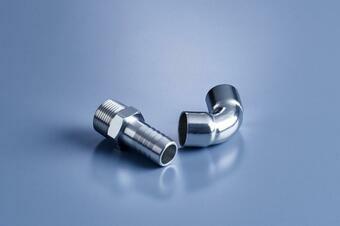Electroless tin plating is a displacement plating that utilizes the potential difference of metals, replacing tin with copper. As no electricity is required, it can be processed uniformly and can be used for improving the slidability of copper products and for soldering.

Basic characteristics
| Wear resistance | Heat resistance | Corrosion resistance | Decorativeness | Soldability | Lubricity | Adhesion | Electrical conductivity | Dimensional accuracy |
| × | △ | 〇 | 〇 | ◎ | ◎ | 〇 | ◎ | ◎ |
Features
Features 1Since no electricity is required, it enables uniform plating on complex shapes where there is no electrical contact or on independent patterns such as substrates. In addition, plating can be performed without leaving contact marks as no contacts are required.
Features 2Thickening can not be performed due to displacement reaction. Given time, we can apply plating up to about 2 μm.
Plating equipment
| Processing type | Maximum size | Maximum weight |
| Rack, basket | 400×400×100 | 5kg |
Proceccable materials
Copper materials
Application
"Carbon brushes, soldering on fine patterns such as printed circuit boards, and initial conformability of sliding parts, etc. "